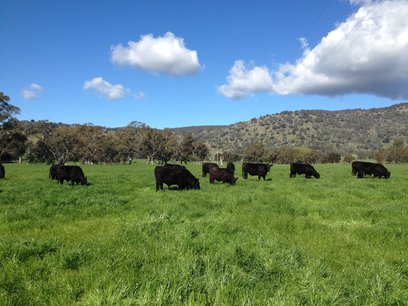Australia
February 19, 2019

As summer draws to a close, many graziers will be looking for quick feed options to reduce their reliance on supplementary feed for their livestock. Sowing an annual crop is a great way to help fill feed gaps during winter months.
“Sowing a good quality autumn pasture or fodder crop will boost your home-grown feed base. Well established and managed annual pastures will also allow for increased productivity at times when perennials may be growing slowly, and will remove grazing pressure from your valuable pastures, keeping them in good shape for the next growing season,” explains Kym Jones, Territory Manager at Heritage Seeds.
“Sowing an annual crop may also provide opportunity for hay and silage, which can be extremely valuable during more challenging times of the year.”
According to Mr Jones, there are a number of useful species and varieties to choose from, depending on your individual circumstances and feed requirements.
Annual or Italian Ryegrass
Annual or Italian ryegrasses are a popular and highly reliable autumn, winter and spring forage.
Annual ryegrass is popular in areas with winter dominant rainfall and dry, hot summers. Often used for winter feed and/or as a silage and/or hay crop, particularly where there is no expectation or requirement of summer growth. Annual ryegrass exhibits the greatest winter growth potential of all the ryegrass types.
Italian ryegrasses are highly productive in areas where late spring rainfall is reliable, or where summers are mild. They are very useful for oversowing into run-down pastures as a boost for a year or two. Italian ryegrass can persist for 2-3 years in summer-mild areas under irrigation or reliable summer rainfall.
Forage Cereals
Forage cereals, such as oats or barley, are quick to establish can provide good bulk feed that can be directly grazed or cut and conserved as hay or silage.
Breeding has seen the release of new varieties that are developed for tolerance to multiple grazing, high quality and high forage yield in Australian conditions.
In areas where winter feed with a subsequent fodder opportunity is needed, forage oats, triticale and barley may be planted from late summer through to mid-winter. Some oats and barley may also be suitable for late winter and early spring sowing.
Forage Brassicas
Autumn-sown forage brassicas are a low-cost option providing high feed value (high in protein and energy) through the winter months. Ideally, they should be sown in early Autumn when soil temperatures are still around 12-14 degrees or higher.
Ultimately, good planning is the key to success to quick Winter feed, says Mr Jones.
“Understanding your feed requirement is critical. It will determine what you can sow, when you need to sow it, and most importantly, when you can graze it.
“But if you’re not sure what your best options are, get advice - that’s what we’re here for. We want nothing more than to help farmers to grow with confidence and get the most out of their paddocks.”